Cinema, being a comparatively younger medium of storytelling, has adapted elements from different pre-existing art forms. Theatre is one such ancient practice that has had a major influence on cinema both structurally and thematically. Multiple stylistic components of films have been directly created out of theatrical conventions. In this piece, I will be talking about one such narrative technique predominantly used in films, which can be related to a particular school of theatre and its ideological discourse. The narrative technique I am referring to here is called ‘Fourth Wall Break’. It is a meta-cinematic device where a character breaks the imaginary fourth wall to directly communicate with the viewer, hence interrupting the illusory impact.
This narrative intrusion creates a certain subversive impact on the viewer and emphasizes the fact that whatever a person is watching is a work of fiction and not reality. This may seem jarring to many because it is eroding the fundamental idea on which an expression like cinema is dependent. An audio-visual experience like film is all about enchantment. Its primary objective is to immerse the audience in the imaginative world it has woven. A device like ‘Fourth Wall Break’ shatters this spell of enchantment. We have encountered this phenomenon in multiple films across languages. Let us take some cinematic examples for better understanding.
Take François Truffaut’s iconic debut film “The 400 Blows” (1959), for instance, which is considered a seminal piece of the ‘French New Wave’. During the climax of the film, our troubled adolescent protagonist, Antoine Doinel, embodied beautifully by Jean-Pierre Léaud, looks directly at the camera after he has finally reached the sea. We get a freeze-frame as the camera gradually zooms in on his face. It appears as if the character is directly looking at us and trying to communicate his feelings. This is considered a memorable moment of the fourth wall break in world cinema. Let us take a different example.
In a pivotal sequence of Mrinal Sen’s “Interview” (1971), the protagonist, played by Ranjit Mallick, is recognised by some fellow travellers in a tram ride. He straight away looks at the camera and exclaims that he is not the person he has been pretending to be. He is just an actor playing that particular character, even the lady playing his mother is not his actual mother, but another actor! It does not stop there. He goes on to name the director himself and explains how they are trying to make an unconventional film.
This sequence imperceptibly blurs the line between fiction and reality. Multiple other films like “Breathless” (1960), “A Clockwork Orange” (1971), and “Annie Hall” (1977), among others, are notable for using this particular technique. Now, an important question arises- where did this radical cinematic technique originate from? Nothing develops in isolation after all! Everything has a precursor. The technique of ‘Fourth Wall Break’ and many other parallel meta-cinematic elements have been highly inspired by Brechtian Theatre and Dramaturgy.
Explore More in Cinema: 15 Great Films from the French New Wave
Bertolt Brecht was a German playwright and theatre practitioner whose ideas revolutionized modern theatre forever. Originally named Eugen Berthold Friedrich Brecht, the Marxist playwright penned some of the most groundbreaking and memorable plays of the twentieth century. Some of his seminal works include “The Threepenny Opera”, “Mother Courage and Her Children”, “Life of Galileo”, and “The Caucasian Chalk Circle”.
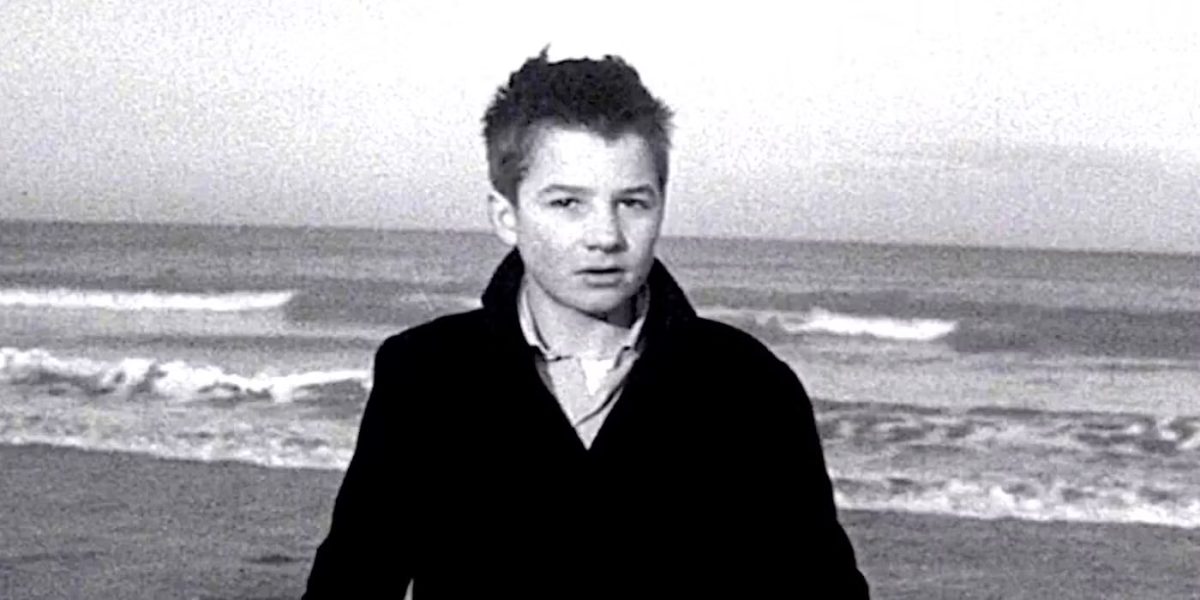
Brecht, who was predominantly known for questioning pre-existing dramatic conventions, devised an unconventional theatrical technique and coined it as “Verfremdungseffekt”. This German term is often translated into English as ‘Alienation Effect’, and that is the term I will be using in the subsequent sections for clarity and approachability. To grasp what Brecht aims to achieve with this nonconformist approach, one must first understand the established structure he seeks to counter.
Western Theatre, a practice that primarily originated in ancient Greece during the period of Classical Antiquity, was based on the theoretical framework introduced by Aristotle. Poetics (‘Peri poietikês’ in Archaic Greek) by Aristotle is still recognised as the traditional foundation stone of Western dramaturgy. Aristotle was highly inspired by the works of the three great Tragedians of classical Greece, namely, Aeschylus, Euripides, and Sophocles, which is reflected in his theorisation. The Aristotelian school of theatre is primarily dependent on the idea of ‘Catharsis’ (‘katharsis’ in Greek).
It is a process, specifically applicable in the case of tragedies, where the viewer undergoes a certain level of emotional purgation or purification while watching a theatrical performance, caused by the arousal of the dual emotions of fear and pity. This phenomenon of internal cleansing leads to a clarity of thought and strengthens the moral-ethical compass of the audience. The primary agenda of the cathartic theory is to provide the viewer with an emotional release and a subsequent sense of relief. It tries to create a hypnotic impact that almost engulfs the audience into the fictional world they are witnessing.
Brecht’s ‘Alienation Effect’ at its very core is Anti-Cathartic in nature. ‘Alienation Effect’, also known as ‘Distancing Effect’, tries to detach the audience from the world they are watching on stage. This effect continuously tries to prevent any kind of emotional involvement from the viewers while watching the play. Brecht, in a way, does not want the audience to feel empathetic towards the characters and their conditions. He invites them to a realm of critical thinking, where they can perceive the whole scenario from a perspective of objectivity.
This term was first used by Brecht in his famous essay published in the year 1936 titled “Alienation Effects in Chinese Acting”. One must not forget that Brecht was highly inspired by Chinese drama. For example, one of his famous plays, “The Caucasian Chalk Circle,” was a direct derivation from an anonymous Chinese didactic play called “The Chinese Chalk Circle.” The concept was not completely Brecht’s innovation, though. Snippets of it can be observed in Walter Benjamin’s writings preceding Brecht’s aforementioned essay, specifically in Benjamin’s 1934 essay, “The Author as Producer”.
You Can’t Miss This: 20 Great Movies That Students Should Watch
Brecht was also notably inspired by Russian playwrights like Viktor Borisovich Shklovsky and Sergei Mikhailovich Tretyakov in his coinage of the term. His method was known for using different techniques like explanatory inscriptions, authorial intrusion, and unfamiliar stage arrangement to accentuate the artificiality of the play. This technique can be found in many of his plays. Let us analyse “The Resistible Rise of Arturo Ui”, for instance. This overtly political play was a direct satirical allegory of the exploitative rise of Adolf Hitler and his Nazi party in Germany preceding the Second World War.

The play, written in 1941, chronicles the rise of a fictional small-time Chicago gangster and how he manipulates the general public in the process. Throughout the play, the fictional narrative is interrupted by fragmentary information about the real-life situation of Germany that the play is metaphorizing. This instance again blurs the line between fiction and reality and makes the audience conscious about the fact that whatever they are watching on stage is an allegorical representation of a real-life situation.
Something more interesting is the prologue of the play, where the announcer directly addresses the audience. Other Brechtian plays of the period, like “The Caucasian Chalk Circle”, adapt a frame-narrative or a story within a story structure. A major element of ‘Alienation Effect’ was the actors breaking character to directly communicate with the viewers. This is something that can be observed as a parallel, or more accurately, a spiritual predecessor to the cinematic usage of ‘fourth wall break’, where the characters are basically attempting to do the very same thing.
This performative technique emerged out of a conscious political agenda. Brecht wanted the audience to critically analyse the symbolic situations he was creating through his plays instead of merely looking at them as means of entertainment and emotional engagement. It is anti-cathartic, as I mentioned above, because it is deliberately trying to prevent any kind of emotional cleansing or purgation. It is trying to keep the audience at a critical distance to let them analyse the circumstances. Moreover, it can be concluded that Brecht here is demanding intellectual engagement from his viewers rather than emotional involvement. This technique of ‘Alienation Effect’ falls under Bertolt Brecht’s wider theory of ‘Epic Theatre’, which was precisely a reaction to traditional theatre of the period, emphasizing emotional immersion and escapism.
So, it can be clearly understood from this elaborate discourse that breaking the imaginary fourth wall is an intrinsic stylistic element of the Brechtian ‘Alienation Effect’. Cinema has effectively appropriated this technique to create a disorienting impact. When a character from a film voluntarily breaks the fourth wall during an intense scene, it makes the viewer uncomfortable, and that is precisely what the director has intended. The acclaimed Mexican poet Cesar A. Cruz wrote in one of his seminal poems, “Art should comfort the disturbed and disturb the comfortable.” A device like the ‘Fourth Wall Break’ unsettles the viewers’ comfort zone and compels them toward deeper introspection.
Bertolt Brecht was always sceptical about the idea of so-called ‘realistic theatre’. His theatre never tried to achieve realism, that had never been his objective. He always tried to make his audience aware of the constructed nature of a dramatic performance. Film directors using a technique like ‘fourth wall break’ also intend to underline the artificiality of films.
Theatre and Cinema are undoubtedly distinctive art forms having their respective characteristics. But there are also visible instances of intersection and synthesis between the two. “Fourth Wall Break” can be seen as a manifestation of this artistic amalgamation; it is a cinematic device having its roots steeped in theatre.

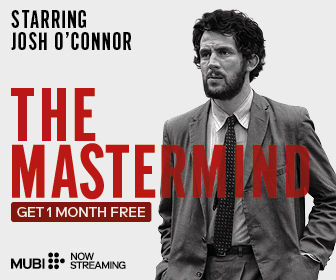

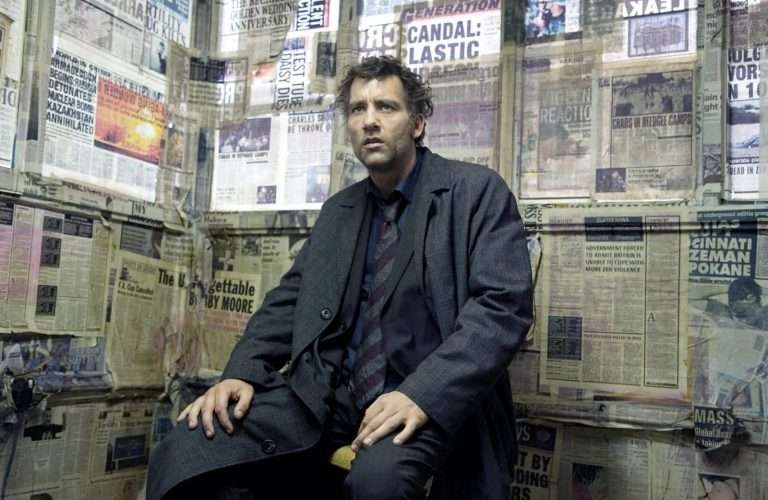

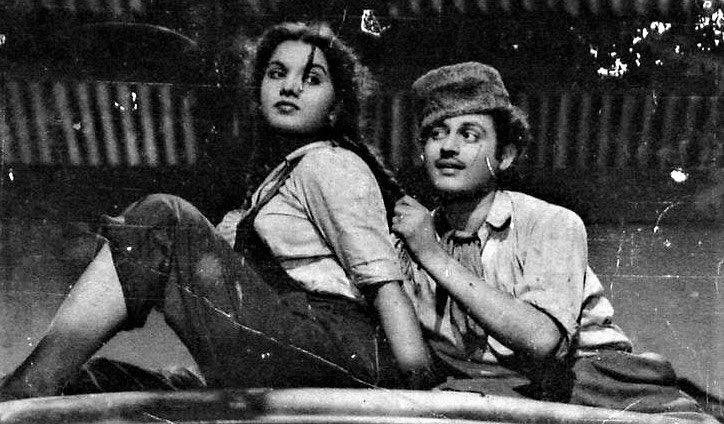

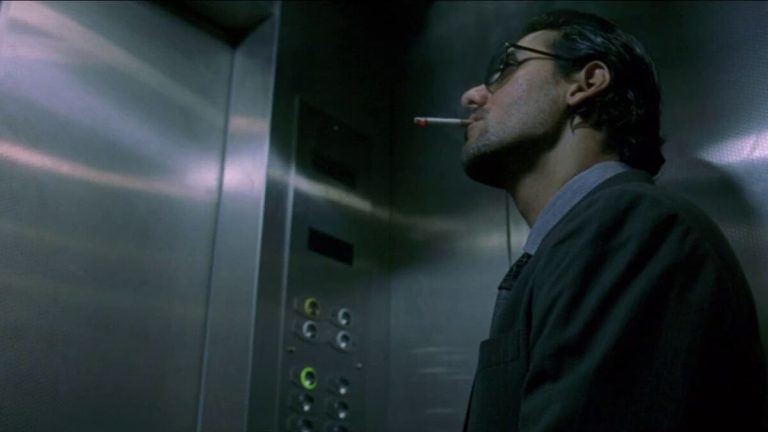
![Amadeus [1984]: For the Artist in You](https://79468c92.delivery.rocketcdn.me/wp-content/uploads/2017/06/Amadeus-3-768x494.jpg)